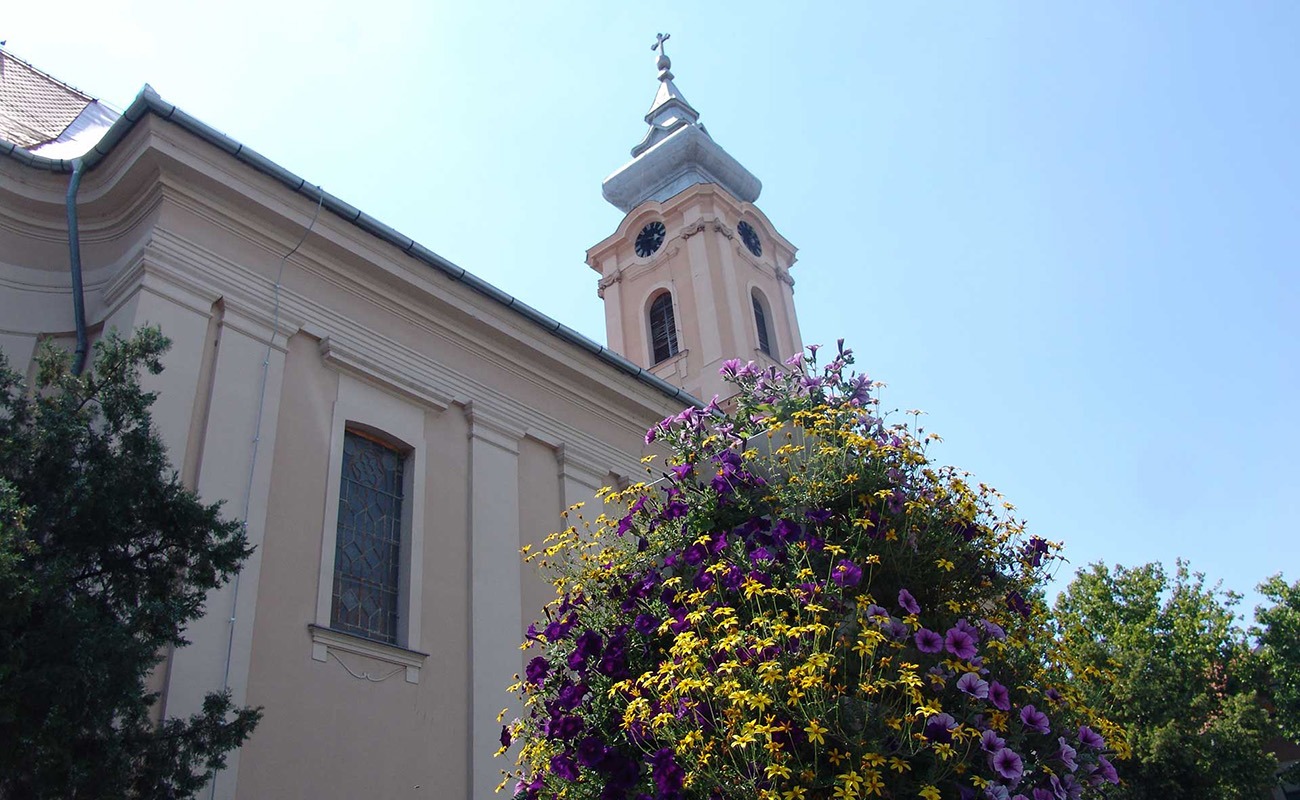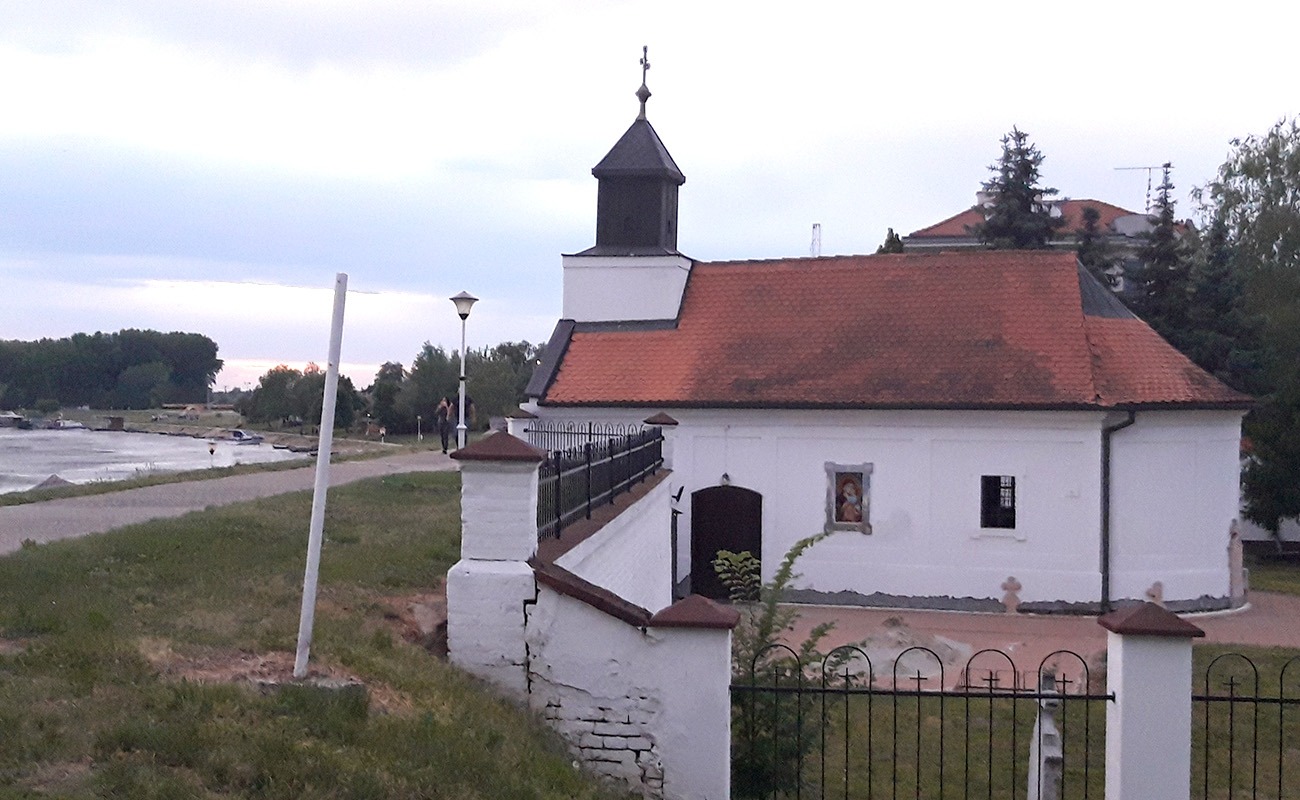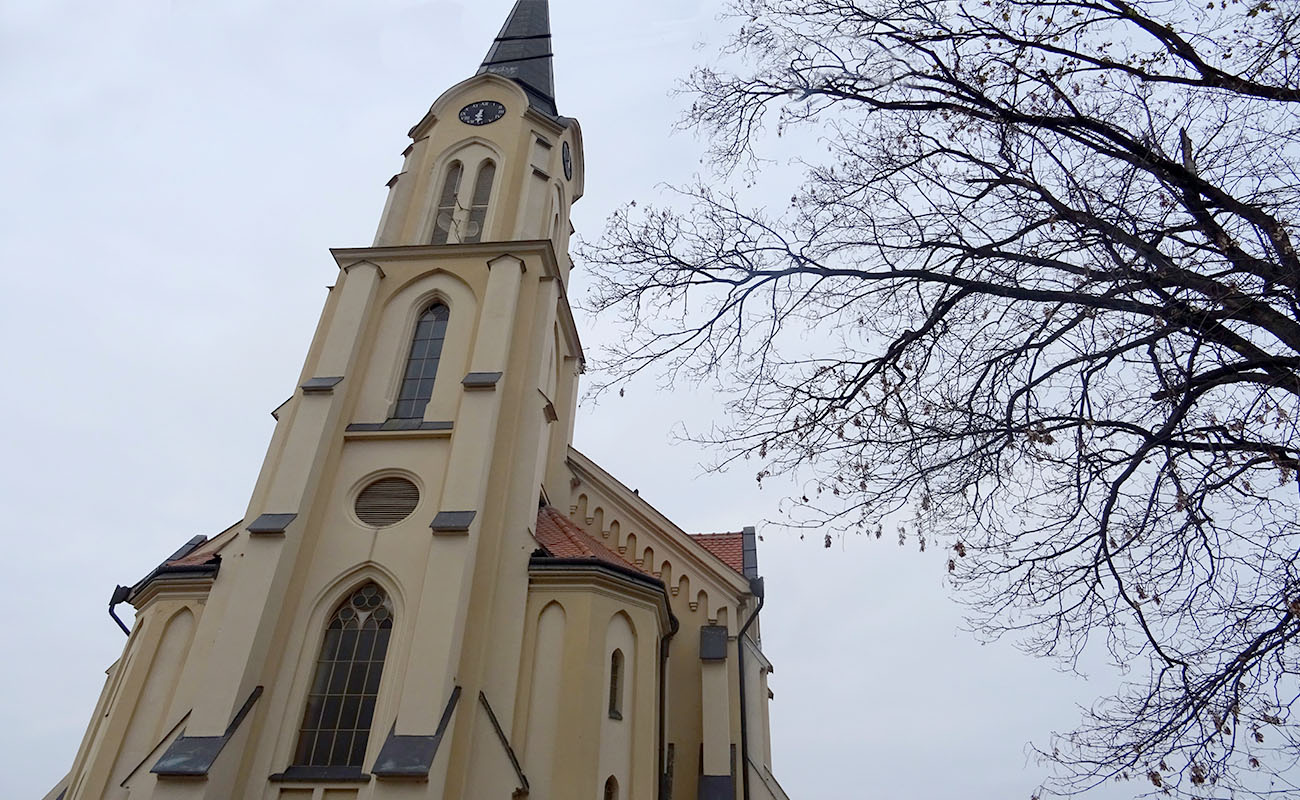St. Nicholas Church
History says that by the end of the 18th century Novi Bečej Sipahi became an example of a rich, cultural, spiritual and educational multinational society. So that is how Serbs, Hungarians, Germans and Jews, by protecting the national, religious and cultural identity, managed to protect their architectural tradition.
That’s how the Orthodox church dedicated to Saint Nicholas became a symbol of a rich and architectural spirit of its time. Papers said that Klara Šišanj was a great benefactor of the church. Her money was used for painting the great iconostasis in 1804. She was buried in the naos of this temple on September 9th , 1830. The Serbian Orthodox church St. Nicholas in Novi Bečej is one of the oldest Orthodox temples on the territory of Vojvodina. It was built in 1744 at the time of the Turkish war when Joseph II was the Emperor. The temple was built of solid materials as a single-nave building with a five sided apse and a bell tower.
Around the church is a spacious and fenced churchyard and a big cross built from red stones placed on a stairs shaped stand. It is a monument of great cultural importance. It’s dedicated to St. Nicholas and has a rich iconostasis painted by Stefan Gavrilović in 1814. The newest research disclosed in 2010, by Branislav Todić proves that Gavrilović really is the painter of these icons, because earlier they were attributed to Jefimije Popović. It’s unknown why this painter from Srem was hired, but we got to know that the whole iconostasis was painted by the 3rd November, and that the same day the Municipality of Bečej asked the Consistory of Timisoara to make a commission which would inspect and give their professional opinion about the painted altar partition. The members of commission were the Archimandrite Pavle Kengelac from Senđurđ and Vojlovo Hegumen Joanikije Miliković. This commission evaluated very negatively the work of a painter Gavrilović criticizing the characters on the icons and their clothes, saying they are “bad and inappropriate”. They wanted iconostasis to be corrected and Magistracy from Karlovac said the painter should do it. Papers from archive show that Gavrilović had signed the contract with Novi Bečej municipality, and committed himself to correct observed weaknesses. He probably did it, because this case were no longer mentioned in the written documents of Timisoara and Karlovac archives. It was interesting that remarks were not made on iconography in the church but entirely on artistic content. Regardless of this unpleasant event, Gavrilović’s extraordinary work on composition and drawings is indisputably, his skillful painting of dead nature and landscapes in the background of icons, excellent modeling of the characters of the Mother of God and angels, as well as colorful nuances with great light effects. Gavrilović, as one of the most prominent representative of the Serbian late baroque and classical painting, still had a great reputation in his Srem where church dignitaries and municipalities literally fought over his work. This talented painter probably had some help from his students when he painted the church in Novi Bečej : Dimitrije Đurković, Petar Nikolajević and Georgije Bakalović. Today iconostasis in Novi Bečej is just partially known because many of its icons were reproduced in 1928, which was done by an academic painter Vasa Pomorišac from Belgrade (born in Modoša, today Jaša Tomić) and Zdravko Sekulić from Belgrade, too (born in Surduk). Wall paintings on the altar's arch and naos were done by one of the first representatives of the Serbian romanticism Pavle Simić in 1858.
On the east side, in the churchyard, there was an old church school built at the same time as church, and on the south there was a parish office or sacristan’s apartment. These buildings have not existed since 2009. Today parish house was built at the end of 19th century as a ground floor building rectangular base.
There are two windows on the street side, and four facing the church from the side. On the façades only the ornaments and mortar plastics are preserved above the double wooden windows in the form of trilithon beams that are above windows with female heads.
Naturally, like all objects dating back to past times, this sacred object required restoration and renovation. The church was in a very bad condition because of inadequate construction works. Moisture destroyed parts of the iconostasis and wall paintings. Different types of moisture destroyed the beauty of the temple’s interior. The capillary moisture lifted at 4,0m so that the valuable parts of the church furniture as well as the wooden doors were endangered. Institute for the Protection of Cultural Monuments in Zrenjanin prepared Conservation architectural and construction project in 2009, for church restoration, on request of Serbian Orthodox Church in Novi Bečej municipality. At the end of 2011, St. Nicholas orthodox church got the new and fresh look to our pride and believers who come to this temple.
A significant collection of 14 protected icons which are the most valuable items of the church are on the choir wall or on the walls of narthex under the choir or on the walls of the nave and the altar space. Other icons were gifts to church. These were protective icons which grain dealers had been giving to the church in Novi Bečej during the 18th and 19th century. There were also donated icons of families who did not have sons, as well as icons donated by the Russian-White Armies who lived in Novi Bečej after the October Revolution.
Triptych from the beginning of the 18th century with the image of St. George killing the Dragon, the cross with crucifixion from the old iconostasis, two icons from Jerusalem – one is oil on the board and the other is oil on canvas, St. John Chrysostom, the Virgin on the Throne, The Virgin with Christ, Two Saints, Holy Trinity, Ascension Day and other important icons which are part of the old protected iconostasis brought from a small orthodox church – monastery by the river Tisa, and it has a special care. Experts from Matica Srpska Gallery from Novi Sad did expert assessment of icons and liturgical items condition, furniture inventory and other measures that had to be done for protecting this priceless historical and art treasure. This is a valuable material for studying painting and the history of our town from the 16th century to the 19th century, which is the very reason for planning conservation and restoration works. Our wish is to exhibit this treasure in a certain place prepared specially for that.
Valuable works of art, well painted iconostasis, an old church furniture moved from a small church by the river Tisa dedicated to the Ascension of the Holy Virgin - monastery, and a particularly significant icon of the Virgin with Christ, deserve to visit this holy temple and experience peace, tranquility and comfort.
Other sights

St. Clare Church

Monastery near the Tisa
